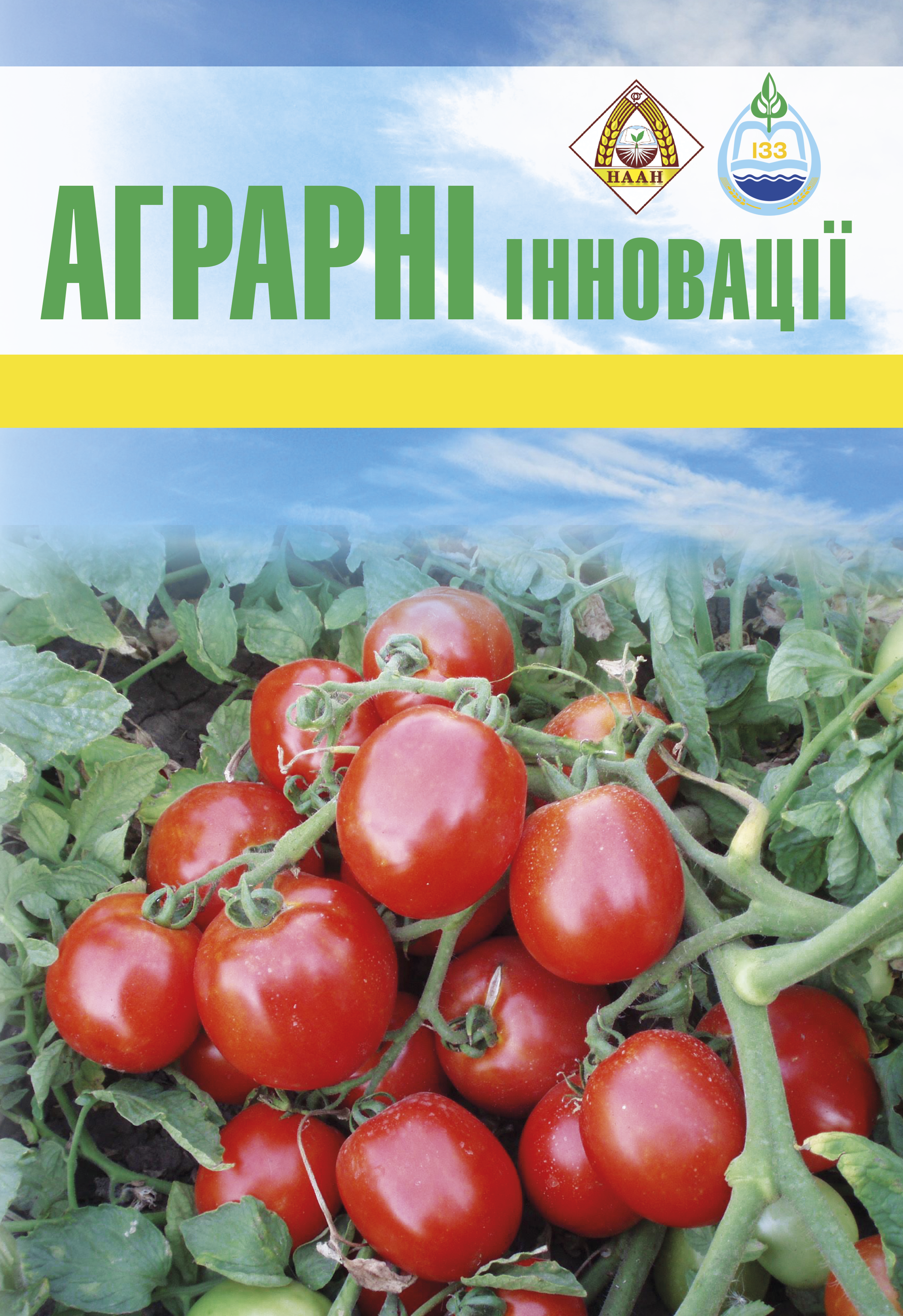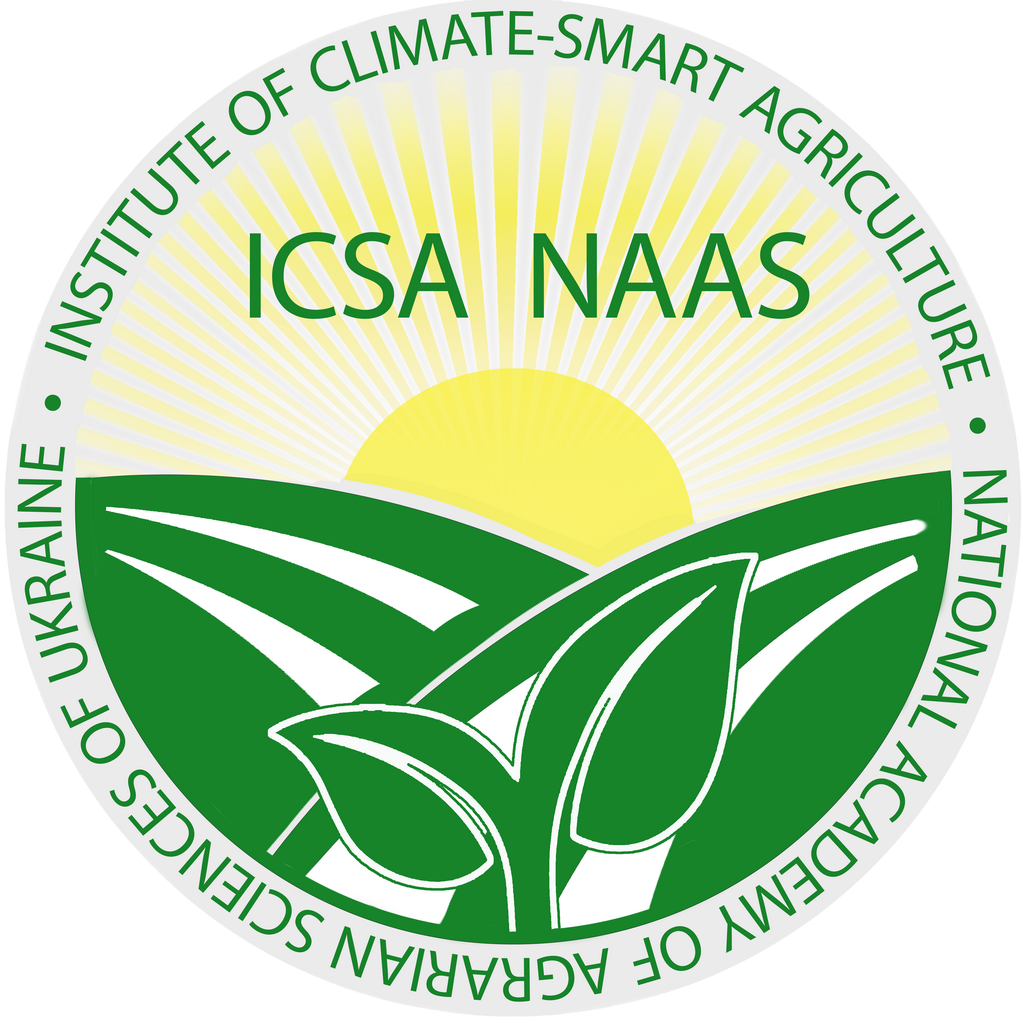Formation of winter rapeseed seed productivity in climate change conditions
Abstract
The purpose is to analyze the research results bydomestic and foreign scientists devoted to the winter rapeseedcultivation for further improvement of elements of cropcultivation technology using biological products in irrigatedand non-irrigated conditions of Southern Ukraine. Results. The strategic development of oilseed cultivationtechnologies is oriented towards world trendsin approaches to agricultural technology and plant protectionsystems. This necessitates the development ofadapted varietal agricultural technologies, which in theend will ensure the formation of a modern technologicalstrategy for the development of the agricultural sector ofUkraine and guarantee its food security in the long term.In connection with climate change and the intensificationof crop cultivation technologies, as well as the creationof new biologically active preparations, it is necessaryto establish optimal, economically feasible timing oftheir application in irrigated and non-irrigated conditionsand study the influence of these factors on the formationof seed productivity of winter rapeseed. Analysis ofresearch and publications by prominent domestic scientistsallowed us to determine in more detail the economicvalue of winter rapeseed, to identify some elements oftechnology and the positive impact of organic production.In conditions of climate change, the use of optimal agrotechnicalparameters contributes to the formation of highyields of winter rapeseed and increases the profitability ofthe oilseed industry.Conclusions. Relevant issues regarding further optimizationof crop growing technology parameters were identified.One of the effective measures to improve cultivationtechnology and increase the profitability of winter rapeseedcultivation is the use of biologically active preparations forfoliar fertilization of crops. The use of biological preparationsis an integral aspect of modern crop production, whichcontributes to optimizing plant nutrition, stimulating theirdevelopment and increasing seed productivity.
References
2. Іващенко О.О., Рудник-Іващенко О.І. Напрями адаптації аграрного виробництва до змін клімату. Вісник аграрної науки. 2011. № 8. С. 10–12.
3. Інноваційні підходи до фіторемедіації та фіторекультивації у сучасних системах землеробства: монографія / Цицюра Я. Г., Шкатула Ю. М., Забарна Т. А., Пелех Л. В. Вінниця : ТОВ «Друк», 2022. 1200 с.
4. Бардін Я. Б. Ріпак: від сівби – до переробки. Біла Церква : Світ, 2000. 107 с.
5. Петриченко В.Ф., Корнійчук О.В. Стратегія розвитку кормовиробництва в Україні. Корми і кормовиробництво. 2012. Вип. 73. С. 3–10.
6. Нейко І. С. Оцінка стану лісових екосистем у контексті збалансованого лісокористування та забезпечення екологічної стабільності ландшафтів України. Науковий вісник НЛТУ України. 2008. Вип. 18 (10). С. 16–27.
7. Sánchez A. C., Kamau H. N., Grazioli F., Jones S. K. Financial profitability of diversified farming systems: A global meta-analysis. Ecological Economics. 2022. Volume 201, November, 107595. P. 1–12.
8. Barratt B. I., Moran V. C., Bigler F., van Lenteren J. C. The status of biological control and recommendations for improving uptake for the future. BioControl. 2018. Vol. 63. Р. 155–167. doi: 10.1007/s10526-017-9831-y
9. Ткаленко Г. Біологічні препарати в захисті рослин. Спецвипуск журналу Пропозиція. Сучасні агротехнології із застосування біопрепаратів та регуляторів росту. 2015. С. 6–14.
10. Binta B.A., Bruno B. Economic and Environmental Performances of Organic Farming System Compared to Conventional Farming System: A Case Study of the Horticulture Sector in the Niayes Region of Senegal.Pro. Env. Sc, 2015. 29. Р. 17–19 https://doi.org/10.1016/j.proenv.2015.07.132
11. Крутякова В. І. Біометод – основа сталого розвитку вітчизняного землеробства. Вісник аграрної науки. 2020. № 9 (810). С. 5–14. doi: 10.31073/agrovisnyk202009-01
12. Mondal S. C., Pal S., Mukhopadhyay S. Effect of nitrogen and phosphorus on growth and yield of pea (Pisum sativum L.). International Journal of Current Microbiology and Applied Science. 2017. Vol. 6, No. 8. P. 2230–2237. URL: https://doi.org/10.20546/ijcmas.2017.608.264 Влащук А. М., Дробіт О. С., Шапарь Л. В., Прищепо М. М., Конащук О. П. Оптимізація технології вирощування насіння ріпаку озимого в умовах Південного Степу України. Аграрні інновації. 2020. Вип. 2. С. 96–102.
13. Gupta S. K., Aditya Pratap. History, Origin, and Evolution. Advances in Botanical Research. 2007. Vol. 45. P. 1–20.
14. Huangfu C. H., Song X. L., Qiang S., Zhang H. J. Response of wild Brassica juncea populations to glyphosate. Pest Management Science. 2007. Vol. 63. P. 33–40.
15. Калетнік Г. М., Гончарук І. В. Економічні розрахунки потенціалу виробництва відновлювальної біоенергії у формуванні енергетичної незалежності агропромислового комплексу. Економіка АПК. 2020. № 9. С. 6–16.
16. López-Granados F, Lutman PJW. Effect of environmental conditions on the dormancy and germination of volunteer oilseed rape (Brassica napus L.). Weed Sci. 1998. Vol. 46. P. 19–23.
17. Gunstone F. D. Production and consumption of rapeseed oil on a global scale. Eur. J. Lipid Sci. Technol. 2001. Vol. 103. P. 447–449.
18. Bhardwaj H. L., Hamama A. A. Oil, erucic acid, and glucosinolate contents in winter hardy rapeseed germplasms. Industrial Crops and Products. 2000. Vol. 12. P. 33–38.
19. Mondelaers K., Aertsens J.; Van Huylenbroeck G. A Meta-analysis of the differences in environmental impacts between organic and conventional farming. Br. Food J., 2009. 111. Р. 1098–1119.
20. Łuczka Władysława, Kalinowski Sławomir. Barriers to the Development of Organic Farming: A Polish Case Study. Agriculture, 2020. 10 (11). Р. 536. https://doi.org/10.3390/agriculture10110536
21. Hormesis in plants: The role of oxidative stress, auxins and photosynthesis in corn treated with Cd or Pb. / Małkowski E., Sitko K., Szopiński M., Gieroń Ż., Pogrzeba M., Kalaji H. M., Zieleźnik-Rusinowska P. International Journal of Molecular Sciences.2020. № 21(6). Р. 2099.
22. Navrotskyi О. Systemic challenges in agricultural business: classification and ways to overcome them. Bulletin of Lviv National Environmental University. Series «AIC Economics», 2024. No 31. P. 40–44. https://doi.org/10.31734/economics2024.31.005
23. Влащук А. М., Дробіт О. С., Валентюк Н. О., Влащук О. А., Іванов Г. М. Вплив технологічних елементів на формування продуктивності буркуну однорічного. Вісник Аграрної науки. Київ, 2024. № 6 (855). С. 14-22.
24. Лавриненко Ю. О., Влащук А. М., Дробіт О. С., Влащук О. А. Насіннєва продуктивність буркуну однорічного залежно від способів сівби та удобрення. Передгірне та гірське землеробство і тваринництво. Львів-Оброшине, 2020. Вип. 67. Ч. 2. С. 139–151.
25. Poliovyk V. M., Lukashuk L. Ya., Rovna H. F., & Huk B. V. Productivity of winter rape depending on fertilization and liming in the conditions of Western Polissia. Cereal Crops. 2020. 4 (1). P. 108–115. https://doi: 10.31867/2523- 4544/0113
26. Altieri M.A., Nicholls C.I. Agroecology and the reconstruction of a post-COVID-19 agriculture. Journal of Peasant Studies. 2020. Vol. 47, No 5, P. 881–898.
27. Skjærseth, J. B. Towards a European Green Deal: The evolution of EU climate and energy policy mixes. International Environmental Agreements: Politics, Law and Economics, 2021. 21 (1), P. 25–41. https://doi.org/10.1007/s10784-021-09529-4
28. Влащук А. М., Колпакова О. С., Влащук О. А., Копилов С. О., Галілюк В. В. Розробка елементів технології вирощування буркуну білого однорічного в умовах Південного Степу України. Зрошуване землеробство. Херсон, 2017. Вип. 68. С. 69–73.
29. Науково-практичні рекомендації з технології вирощування насіння ріпаку озимого в умовах зрошення півдня України. Науково-практичні рекомендації / Вожегова Р.А. та ін. Херсон : Олді+, 2018. 48 с.
30. Загальне землеробство / Єщенко В. О. та ін. Київ : Вища освіта, 2004. 336 с.






